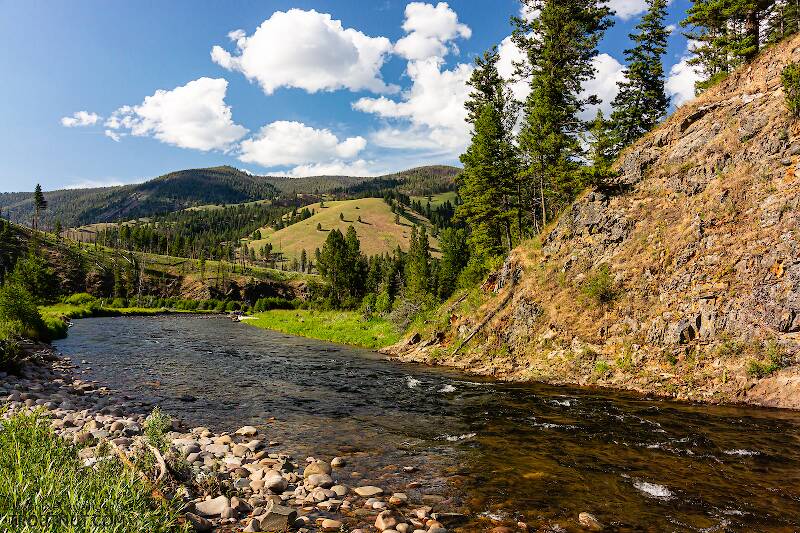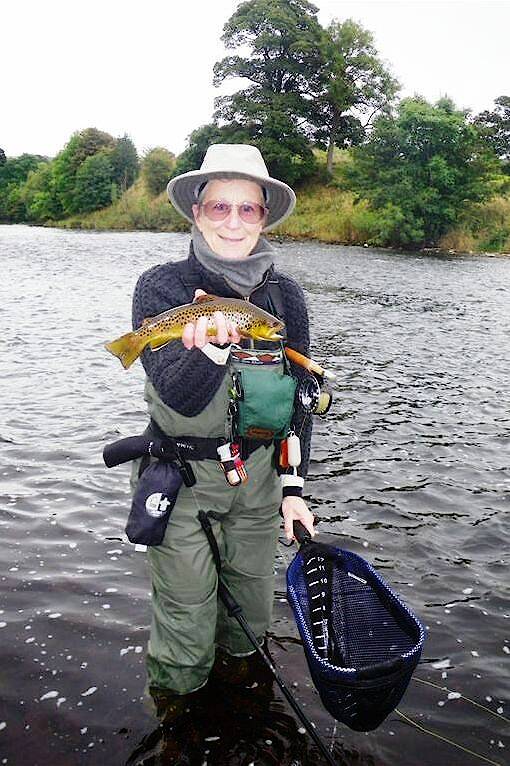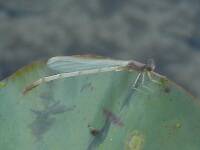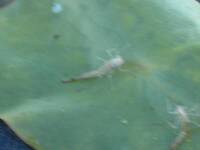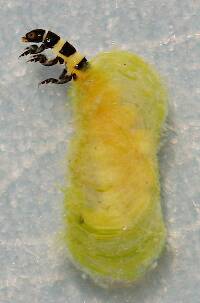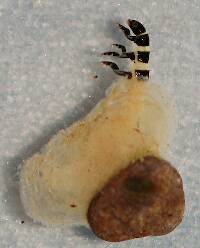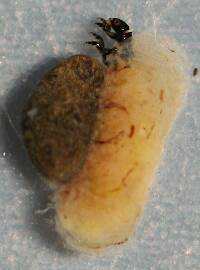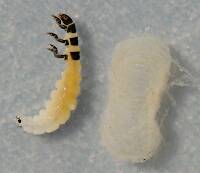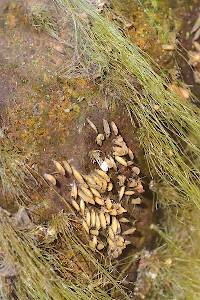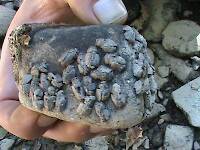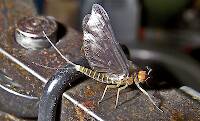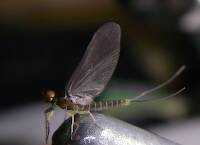
Salmonflies
Pteronarcys californica
The giant Salmonflies of the Western mountains are legendary for their proclivity to elicit consistent dry-fly action and ferocious strikes.
Featured on the forum

As far as I can tell, this species has only previously been reported from one site in Oregon along the Columbia gorge. However, the key characteristics are fairly unmistakable in all except for one minor detail:
— 4 small yellow spots on frons visible in photos
— Narrow occipital spinule row curves forward (but doesn’t quite meet on stem of ecdysial suture, as it's supposed to in this species)
— Short spinules on anterior margin of front legs
— Short rposterior row of blunt spinules on abdominal tergae, rather than elongated spinules dorsally
I caught several of these mature nymphs in the fishless, tiny headwaters of a creek high in the Wenatchee Mountains.
— 4 small yellow spots on frons visible in photos
— Narrow occipital spinule row curves forward (but doesn’t quite meet on stem of ecdysial suture, as it's supposed to in this species)
— Short spinules on anterior margin of front legs
— Short rposterior row of blunt spinules on abdominal tergae, rather than elongated spinules dorsally
I caught several of these mature nymphs in the fishless, tiny headwaters of a creek high in the Wenatchee Mountains.

Troutnut is a project started in 2003 by salmonid ecologist Jason "Troutnut" Neuswanger to help anglers and
fly tyers unabashedly embrace the entomological side of the sport. Learn more about Troutnut or
support the project for an enhanced experience here.
Blackghost
Posts: 3
Posts: 3
Blackghost on May 22, 2009May 22nd, 2009, 6:01 pm EDT
I have learned so many different methods about fishing rivers on what to look for what insect too match on what trout are feeding on. One way is too match your nymph,pupa,or larve to the bottom coloration of the river. Or another method is turning over rocks on the stream bottom and looking for different aquatic insects. What does everyone else have for different methods. And should I try something new? If there not feeding on emergers or spinners I always start with a gold ribbed hares ear,which I think is a great universal mayfly nymph....
Martinlf on May 23, 2009May 23rd, 2009, 2:01 am EDT
It's hard to go wrong with a hare's ear. I often start with a Walt's Worm, which is a hare's ear minus the tail, legs, wingcase, and ribbing--basically a cigar shaped hare's ear with or without a bead. In summer if there's no hatch, I'll start with a wet or dry terrestrial.
"He spread them a yard and a half. 'And every one that got away is this big.'"
--Fred Chappell
--Fred Chappell
Wiflyfisher on May 23, 2009May 23rd, 2009, 3:05 am EDT
What to look for first
I like to start by observing and checking the shorelines and bushes. Spider webs with possible insects caught in the web give us clues (see URL below), as well as looking in the backwaters for shucked nymph cases floating on the surface, or on logs or protruding rocks for shucked cases. Picking up rocks on the bottom may help with certain species but not the burrowing nymphs.
Hare's ear is good, so is a flymph, etc... for a general search pattern. Just depends on if I am dun shrucked or not, which usually I am.
http://www.wiflyfisher.com/ephoron-leukon-mayfly-hatch.asp
John S.
https://WiFlyFisher.com
https://WiFlyFisher.com
Martinlf on May 23, 2009May 23rd, 2009, 5:53 am EDT
Yeah, you might look for some of those "dun shucks" too. :)
"He spread them a yard and a half. 'And every one that got away is this big.'"
--Fred Chappell
--Fred Chappell
CaseyP on May 23, 2009May 23rd, 2009, 7:36 am EDT
personally, the thing i look for first is a local fly shop. if it's unfamiliar waters, they'll have a half dozen of what's working, and if it's home waters, the gossip will tell me all i need to know.
and if there's no local fly shop, i say a prayer for the dear departed and tie on a wulff with a pheasant tail dropper while i wait for a passing fly or fly angler to suggest something else!
and if there's no local fly shop, i say a prayer for the dear departed and tie on a wulff with a pheasant tail dropper while i wait for a passing fly or fly angler to suggest something else!
"You can observe a lot by watching." Yogi Berra
LittleJ on May 23, 2009May 23rd, 2009, 2:52 pm EDT
Assuming I'm on a stream I know little about and there is no apparent insect activity, I almost always start w/ a tandem nymph rig 1 heavy attractor(green weenie or whatever) and a simple caddis larva usually tan or olive sz 16.
Deligon
Posts: 3
Posts: 3
Deligon on May 25, 2009May 25th, 2009, 9:17 am EDT
deligon
rock spring ga.
Midges they are everywhere! one of the streams I fish is the Elk
in Tenn. the Elk has no dominate hatch as far as I know.
I asked a fellow fly fisher who I had observed having a lot more success than I and so began my love affair with midges.
Sometimes off a dry droper and also tandem behind a soft hackle.
Fish is always good,
catching is some times better.
deligon
rock spring ga.
Midges they are everywhere! one of the streams I fish is the Elk
in Tenn. the Elk has no dominate hatch as far as I know.
I asked a fellow fly fisher who I had observed having a lot more success than I and so began my love affair with midges.
Sometimes off a dry droper and also tandem behind a soft hackle.
Fish is always good,
catching is some times better.
deligon
Quick Reply
Related Discussions
Topic
Replies
Last Reply
1
Jul 11, 2008
by Taxon
by Taxon
6
Jan 12, 2012
by Jmd123
by Jmd123

